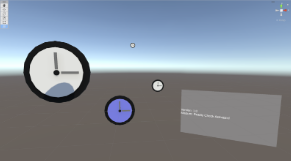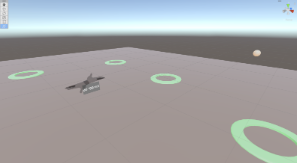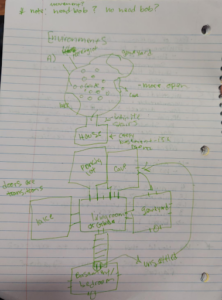This week we made good progress on all aspects of our prototypes and did a good amount of internal testing. During one of our instructor meetings with Ricardo this week, we discussed how the results testing variables totally independently might not hold up once all those tests are combined into one experience. So for this week, we tested some of the basic mechanics of our game as well as some visual language ideas, but we kept those tests to just our team members for now. We plan to invite outside playtesters into an early version of our experience that combines all those early tests starting Wednesday of next week.


On the technical side, we finished a lot of the basic programming that will underlie our experience, freeing us up to focus more on implementing specific moments of our experience going forward. We now have 4 styles of movement setup to test, for the 4 combinations of Hands/controllers and teleportation/continuous movement. Each type of movement has its pros and cons, and so we are waiting for our playtest feedback next week to determine which one to move forward with. We also have the most basic version of our reality check system implemented, with clocks that add time to the player’s lucidity timer if the player focuses their gaze on them for 3 seconds. Our test scene includes copies of this reality check object at various sizes and distances, in order to test the limits of comfort and the precision of the gaze system. From these tests we have discovered that our gaze tracking should be cone shaped, or at least start very narrow and get wider further from the player.
On the art side, we first continued developing our poster and branding. Through feedback from team members and faculty, we went from four sketched concepts of the poster, to second iterations of the two that stood out, to a single finished version that is awaiting final approval. For our in-game art, we discussed how to start experimenting with using visual language to affect players’ emotions. We constructed a test environment made of 3D primitives in Unity, in which the shape language gradually changes from soft and circular to sharp and angular while the colors and lighting also grow darker over time. This environment will be combined with our programming experiments to form the basis of our playtests next week.
Finally, we sat down and made a lot of game design decisions about the shape of our experience. Our game environment will follow a “hub-and-spokes” design, with a central starting area that allows the player to wander to any of the other areas of their choice. They will then generally return to the hub before traversing to the next section, although direct transport from between outer sections may be possible as the experience progresses. The exact shape of these environments will depend partly on the results of our movement playtests next week. We discussed possible methods of indirect control, including the idea of including “will-o-wisp” guiding lights at the beginning of the experience, which will later morph into the shadowy figures that will menace our players. At the end of the week, our designers delivered a list of possible environments and key items for our artists to concept.

